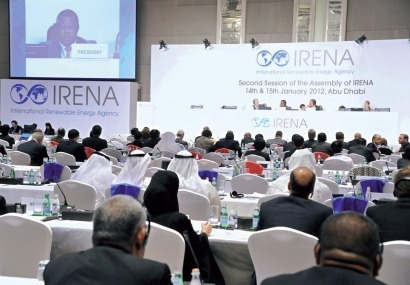
The workshop at IRENA’s Second Assembly attracted more than 80 participants from around the world. The Atlas is designed to combine and expand existing databases on wind and solar potential around the globe into one open web-portal from which user-tailored data can be derived and accessed.
The workshop was divided into three main parts; one explained the latest technical background on the project’s work and achievements; another provided regional and national perspectives from end-users; and a third was an interactive audience discussion.
The next steps in developing the Atlas will include consolidating the inputs received from the workshop and translating them into action.
The development of the Global Atlas for Solar and Wind Energy also took another step forward last month with the signing of a partnership agreement between IRENA and Masdar Institute of Science and Technology.
Under the agreement, Masdar’s Research Centre for Renewable Energy Mapping and Assessment will help develop the solar dataset and the architecture of the Global Atlas. In the future, Masdar will maintain the Atlas on its servers in Abu Dhabi. Masdar and IRENA will also work together in other areas related to the Atlas, such as its definition, technical compatibility, methodological harmonisation and data transparency protocols.
Agreement signed with IEA
IRENA received a boost during its assembly, when it signed a partnership agreement with the International Energy Agency (IEA) , which will strengthen cooperation between the two organisations. Although the agencies have collaborated since IRENA’s inception in 2009 – including developing a joint approach on renewable energy statistics – this agreement will launch a number of new initiatives, such as development of a joint Global Renewable Energy Policies and Measures Database.
The proposed new areas of work include improving the existing IEA database, which will now be known as the IEA/IRENA Global Renewable Energy Policies and Measures Database, and will benefit from additional datasets from IRENA Members and Signatory countries.
Both parties will collect and verify information for the database, which will be open to free public access and be updated at least twice a year.
Other points covered in the Letter of Intent include the regular exchange of information, the organisation of joint conferences and workshops and reciprocal participation in technical committee meetings.
There will also be increased collaboration between the two agencies at the Secretariat level, and in energy technology networks, including the IEA’s Multilateral Technology Initiatives.
For additional information:

